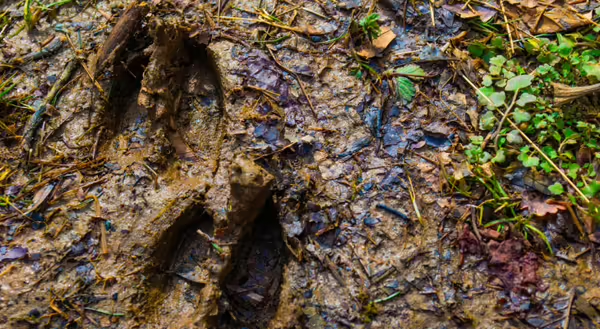
The leaves are falling, rain is creating pockets of mud, and before you know it, we may have snowflakes covering the ground. These seasonal shifts keep many of us curled up indoors, but exciting and interesting signs of wildlife movement lie right below our noses if we know where to look.
Forest preserves, wildlife management areas, state parks, local parks, and most natural walking paths will have various animal tracks. From deer to raccoons, learning how to identify animal tracks is a beautiful way to see into the lives of wildlife.
Animal tracks can tell us much about what animals are present in the area, the size of the animals, and where they are going. Depending on the quality of tracks, we may also learn if they are walking, running, or foraging. While numerous animals walk on four legs, their walking patterns differ, and they have unique tracks specific to their species.
Basic track ID starts by examining the shape of the track. Deer hooves are distinct from paw prints of dogs or cats, which are also unlike bird feet. Examining any claw marks or tail drags can also point towards other species. Cats typically retract their claws while dogs show them. Beavers and opossums normally both drag their tails, but drag lines for beavers are much thicker than drag lines of opossums. Each species has its own gait and print that can help us learn about its path. Let’s look at a few examples.
Deer
Deer have a diagonal cross-walking gait. They place their front and hind legs on opposite sides of their body at the same time. Deer tracks are heart-shaped, formed by two pointed toes. We can tell the speed of the deer based on the differences in length between the tracks. Buck tracks are often larger than doe tracks.
Rabbit
Coyote
Typically, a coyote’s gait is a direct register, where their back feet often land in or near the tracks of their front feet. This can cause their tracks to overlap. Coyote tracks have four toes and may have visual claw marks. These characteristics cause the tracks to often be compared to those of a domestic dog. However, coyote tracks are smaller and are more oval-shaped.
The next time there is mud or snow, take a fun adventure outside to see what animal tracks you can find, and see where they may be traveling to.
Content Guide
About the Author
Darci Webber is the Natural Resources, Environment, and Energy Educator for Livingston, McLean, and Woodford counties. She provides research-based education to communities across the three counties through events, classes, and other programming.